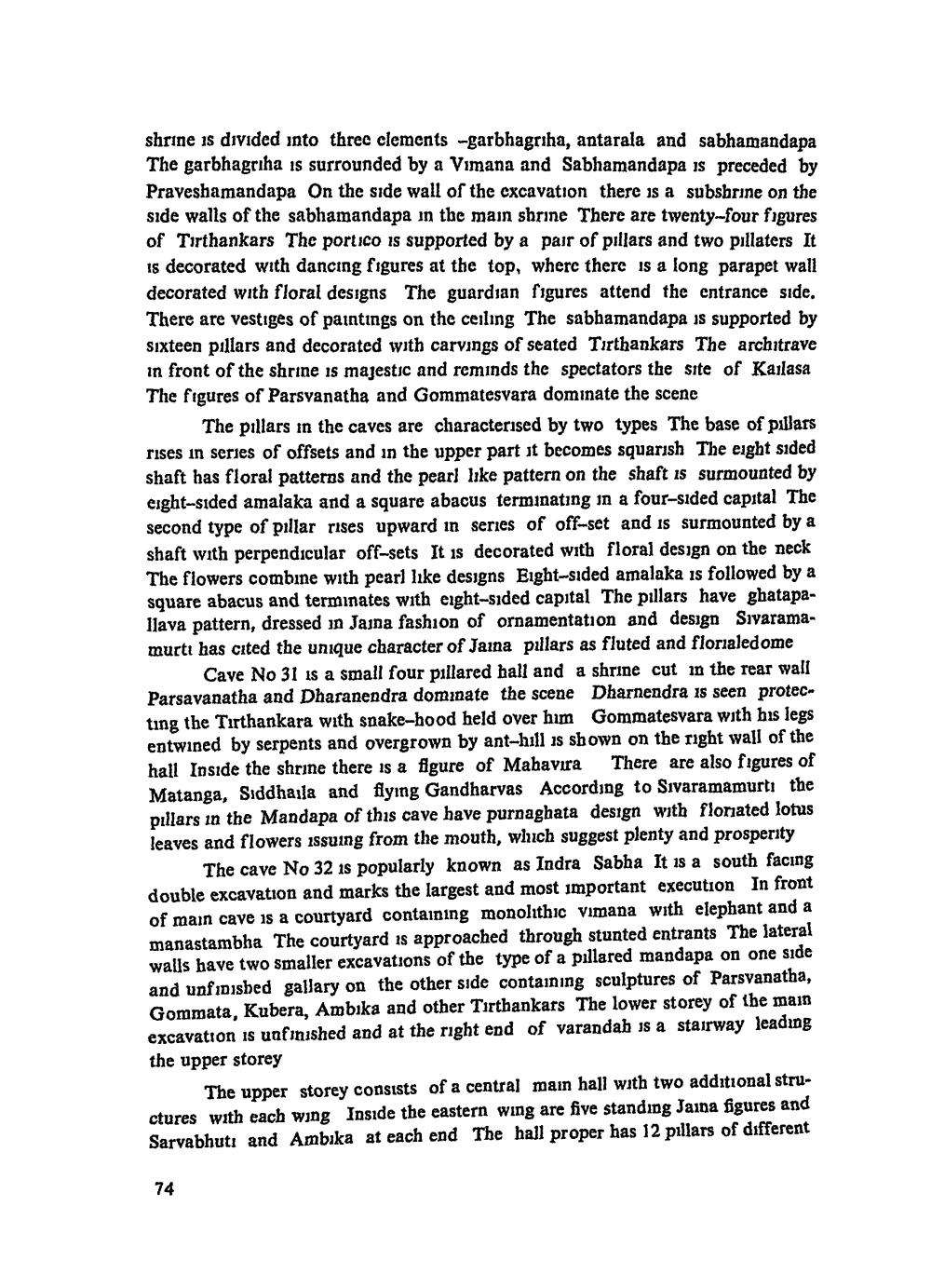________________
shrine is divided into three clements -garbhagriha, antarala and sabhamandapa The garbhagriha is surrounded by a Vimana and Sabhamandapa is preceded by Praveshamandapa On the side wall of the excavation there is a subsbrine on the side walls of the sabhamandapa in the main shrine There are twenty-four figures of Tirthankars The portico is supported by a pair of pillars and two pillaters It is decorated with dancing figures at the top, where there is a long parapet wall decorated with floral designs The guardian figures attend the entrance side. There are vestiges of paintings on the ceiling The sabhamandapa is supported by sixteen pillars and decorated with carvings of seated Tirthankars The architrave in front of the shrine is majestic and reminds the spectators the site of Kailasa The figures of Parsyanatha and Gommatesvara dominate the scene
The pillars in the caves are characterised by two types The base of pillars rises in series of offsets and in the upper part it becomes squarish The eight sided shaft has floral patterns and the pearl like pattern on the shaft is surmounted by eight-sided amalaka and a square abacus terminating in a four-sided capital The second type of pillar rises upward in series of off-set and is surmounted by a shaft with perpendicular off-sets It is decorated with floral design on the neck The flowers combine with pearl like designs Eight-sided amalaka is followed by a square abacus and terminates with eight-sided capital The pillars have ghatapallava pattern, dressed in Jaina fashion of ornamentation and design Sivaramamurtt has cited the unique character of Jaina pillars as fluted and florialedome
Cave No 31 is a small four pillared ball and a shrine cut in the rear wall Parsavanatha and Dharanendra dominate the scene Dharnendra is seen protecting the Tirthankara with snake-hood held over him Gommatesvara with his legs entwined by serpents and overgrown by ant-hill is shown on the right wall of the hall Inside the shrine there is a figure of Mahavira There are also figures of Matanga, Siddhaila and flying Gandharvas According to Sivaramamurti the pillars in the Mandapa of this cave have purnaghata design with floriated lotus leaves and flowers issuing from the mouth, wluch suggest plenty and prosperity
The cave No 32 is popularly known as Indra Sabha It is a south facing double excavation and marks the largest and most important execution In front of main cave is a courtyard containing monolithic vimana with elephant and a manastambha The courtyard is approached through stunted entrants The lateral walls have two smaller excavations of the type of a pillared mandapa on one side and unfinished gallary on the other side containing sculptures of Parsvanatha, Gommata, Kubera, Ambika and other Tirthankars The lower storey of the main excavation is unfinished and at the right end of varandah is a stairway leading the upper storey
The upper storey consists of a central main hall with two additional structures with each wing Inside the eastern wing are five standing Jaina figures and Sarvabhuti and Ambika at each end The hall proper has 12 pillars of different
74




